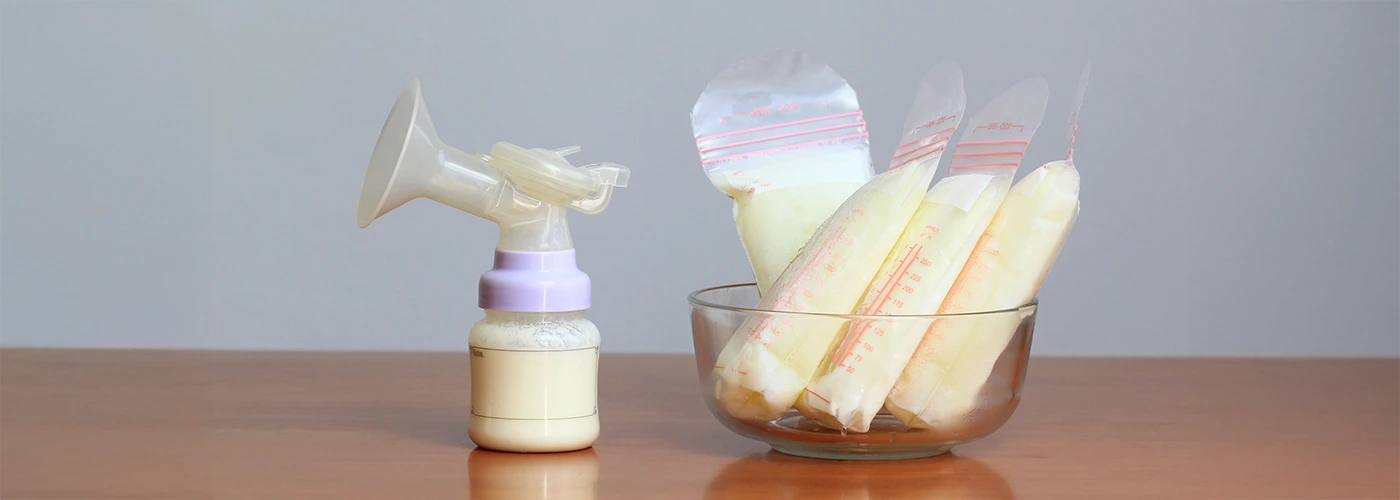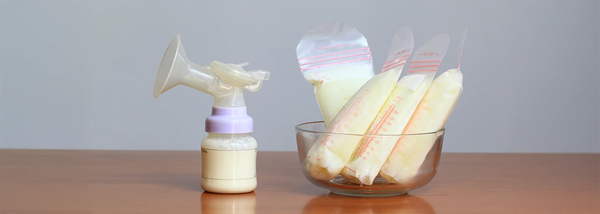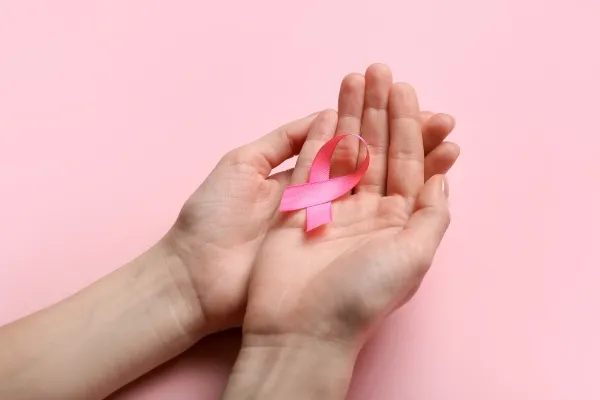Topics
Breast milk is also referred to as ‘liquid gold’ and is the most important source of nutrition for infants. As mothers navigate the breastfeeding journey, many find themselves in situations where they need to express (using breast pumps) and store their milk for later use.
What should I do before and after pumping milk?
Before pumping or handling breast milk:
- Wash your hands with soap and water thoroughly.
- Inspect the cleanliness of your pump kit and its tubing.
- Replace any mouldy tubing right away.
After pumping out your breast milk:
- Rinse the disassembled pump and feeding parts under running water to rinse away the remaining milk. Do not wash them directly in the sink, as the sink may contain germs that could contaminate the parts.
- After rinsing, clean the parts that come into contact with your breasts in a dishwasher if they are dishwasher safe.
- You can also wash the parts by hand in a clean wash basin (which is only used for cleaning the pump parts and not used for other things) with hot water and soap.
- After washing, rinse everything thoroughly under running water.
- Air-dry the parts on a clean dish towel or paper towel.
- Store dry parts in a clean, protected area using clean hands to maintain hygiene.
How to store expressed breast milk?
- Use suitable containers.
- Expressed milk can be stored in a clean, sealed container made of food-grade glass or hard plastic that is not made with bisphenol A (BPA). Glass is preferred for long-term storage as it does not leach chemicals. Plastic containers are suitable for short-term storage.
- Special breast milk storage bags can also be used as they are convenient and space-saving. Ensure they are specifically designed for breast milk storage.
- Avoid storing breast milk in disposable bottle liners or plastic bags designed for general household purposes.
- Do not use plastic bags for general household use as they can contaminate the milk and make it unhealthy for consumption.
- Store in small quantities.
- Milk should be stored in small amounts of 2 to 4 ounces (60-120ml) to avoid wastage.
- Record the date of each expression on the containers.
- Label every container with the date you expressed the breast milk using waterproof labels and ink.
- Add your baby’s name to the label for identification if you are storing expressed milk at your baby’s childcare facility.
- Store breast milk containers in the fridge or freezer.
- Position the containers in the back of the refrigerator or freezer, where the temperature is constant.
- If you are in a situation where you lack access to a refrigerator or freezer, you can temporarily store the milk in an insulated cooler containing ice packs.
What is the storage duration for expressed breast milk?
According to the CDC, breast milk can be safely stored for various durations depending on the storage method. You need to keep track of the breast milk’s storage duration to ensure your baby does not drink spoilt milk.
- Room temperature: Freshly expressed or pumped countertop breast milk can be stored for up to 4 hours at 25°C or colder. Use it within 2 hours if the room temperature is above 25°C.
- In the fridge: Refrigerated breast milk can last up to 4 days when they are kept at 4oC in the fridge. Keep it in the back, away from temperature fluctuations. Once breast milk has been removed from the fridge and warmed, it should be used between 1 to 2 hours. Discard any unconsumed milk after this time frame because it has become contaminated.
- In the freezer: Breast milk stored in a freezer should be kept at -18oC Celsius or colder. Frozen breast milk can be safely consumed within 6 months.
How should I handle frozen breast milk?
- Do not refreeze breast milk: You should never refreeze breast milk after thawing it. Breast milk should be used or discarded after being refrigerated for four days. Breast milk possesses properties that inhibit the growth of harmful bacteria. These properties start to diminish after a few days of refrigeration. If you think you will not use the breast milk within a few days, it is advisable to keep it frozen.
- Avoid mixing frozen and fresh breast milk: It is not advisable to mix freshly expressed breast milk with already cooled or frozen milk as it can rewarm the older stored milk. If for some reason it is necessary, it is best to cool freshly expressed milk separately before mixing it with older, previously cooled, or frozen milk.
- Use frozen breast milk within six months: Although it is best to use frozen breast milk within 6 months is best, breast milk still can be stored in the freezer (at 0° F / -17.778ºC or colder) for up to 12 months.
How to thaw breast milk properly?
- Prioritise thawing the oldest milk: To thaw frozen milk, place the frozen container in the refrigerator the night before you plan to use it.
- Avoid using the microwave: Avoid heating a frozen bottle of breast milk in a microwave or by rapidly heating it over a stove. Some parts of the milk might be too hot, and others cold as heating the milk quickly may result in uneven temperatures. Using the microwave to reheat the milk can destroy the nutrients in breast milk.
- Warm the milk slowly: Immerse the milk in warm running water or a bowl of warm water to gently warm it.
- Do not shake the milk vigorously: Breast milk will separate due to it being not homogenised. This means the cream will float to the surface. Carefully swirl the container to blend the cream back through before feeding your baby. Remember not to shake the milk vigorously as this breaks up the proteins that are vital for the baby’s digestive system.
- Discard leftover milk: If your baby does not finish drinking the breast milk in the bottle, use the leftover milk within 2 hours. Discard any leftover milk if it has exceeded 2 hours.
How to identify spoiled breast milk?
Human breast milk can spoil just like any other kind of milk. This results in a pungent, sour odour and taste. Breast milk cannot be salvaged once it is spoiled. You should be able to determine if the breast milk is spoiled by taking a small sip of it yourself.
How to store breast milk while traveling?
If you are expecting to carry expressed milk with you during travel, it is important to come up with a careful plan on how you will transport the milk. The mode of transportation (e.g., airplane, car, train, bus) you choose can impact what policies you must be mindful of and follow.
Freshly expressed milk can be stored in an insulated cooler bag with ice packs for a duration of up to 24 hours. Upon reaching your destination, you can use the milk immediately, store it in the refrigerator, or freeze it. Keep the breast milk in a tightly sealed and sanitised container at the back of the fridge to maintain a consistent temperature.
When carrying frozen milk in an insulated cooler bag or thermal tote with frozen gel packs or ice, check the milk upon reaching your destination. If there are ice crystals in the milk, you have the option to refreeze it for later use. If you are going on a long journey, it is best to pack extra ice or frozen gel packs to maintain the cold temperature needed to store expressed milk.
If previously frozen milk has thawed completely, it should be kept cold and used within 24 hours. The timeframe of the milk thawing will vary depending on the travel time and the cooler’s temperature. If possible, consider checking the milk after a few hours in the cooler to determine if the milk has thawed.
How to store breast milk at my workplace?
You can store your breast milk in either the refrigerator at your workplace, or you can prepare your insulated cooler bag to store your breast milk.
- In the refrigerator: You can store expressed breast milk with other foods in any refrigerator that is appropriate for food storage.
- In an insulated cooler: Freshly expressed milk can be stored and carried along in an insulated cooler bag with ice packs for a period of up to 24 hours. Place the expressed breast milk in the cooler immediately after pumping to keep it at a safe temperature. Remember to use the milk immediately, store it in the refrigerator, or freeze it once you reach home.
Label your breast milk containers with your name and the date of expression. Additionally, you can also label your cooler with your name and contact information for identification purposes.
Make an appointment at Pantai Hospitals
For expert guidance and support on breastfeeding and pumping, do make an appointment with the team of Consultant Paediatricians and Lactation Consultants at the nearest Pantai Hospital to you today.
Pantai Hospitals have been accredited by the Malaysian Society for Quality in Health (MSQH) for its commitment to patient safety and service quality.
This article has been medically reviewed by Consultant Paediatrician and Neonatologist, Dr Livia Chow Huey Ling.













